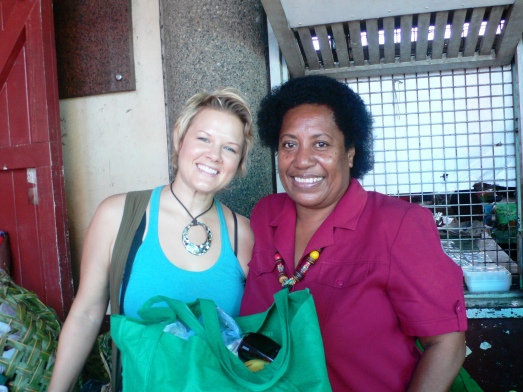If I see one more recipe that calls for a can of pumpkin I’m going to lose it!! Yes, of course, I know we are busy, but really, we know the difference in flavor from canned peaches to fresh peaches right? Yes, we do, exactly my point. And the last time someone sucked down a pumpkin spice latte or pumpkin flavored anything for that matter, did it actually taste like pumpkin? My guess is probably not; most likely it tasted like cinnamon, cloves and ginger…no pumpkin to be found! Did you know that pumpkin actually tastes amazing & not just in pie?! Oh indeed it does. And how about those seeds….all warm and salty and toasty.
What a gift to have pumpkins growing this time of year. Eat them fresh & forget the can!
Pumpkin curry was the first meal I ate at my host family’s house in Fiji. The pumpkin was familiar but done in a way that my palate had never experienced. My host mom would always make it for me whenever I came home for visits and it will forever be a nostalgic food.
Not in the mood to cook but want to try pumpkin? Cut a cooking pumpkin (they call them “pie pumpkins”) into quarters, scoop out the seeds (toast ’em & eat ’em!), place the slices in a glass baking dish. Bake them uncovered with cut side down at 350 degrees for 30-40 minutes. Pumpkin is finished when it is fork tender. Want savory? Sprinkle with sea salt and butter or olive oil. Want sweet? Sprinkle with butter, honey & cinnamon. Want curry? See recipe below……
This recipe is exactly how my host mom made it except that neither of us measures anything so I did my best to note that. I’ve made this recipe probably over 50 times and only ONCE did it actually taste just like hers (I actually called her rejoicing in my success). This curry is warm, velvety and a gorgeous color. In Fiji it was most often eaten with roti (unleavened flat bread) but here I made it with rice.
Eat it with your hands!!!
Kaddu ke Tarkari- Pumpkin Curry
(From the home of my Indo-Fijian host-mom, Sarojni Singh)
4 cups pumpkin, skin peeled, chopped into half inch cubes
1 medium white onion, chopped medium
2 cloves garlic
1 tbsp ginger root, peeled
2-3 small chilies, (adjust quantity according to your heat preference & the type of chilli)
½ tsp fennel seeds
1/2 tsp cumin seeds
½ tsp mustard seed
Sea salt
1 1/2 tblsp coconut or olive oil (I chose a healthier oil as they only use soy or canola)
Optional: 2 tblsp chopped cilantro (mom doesn’t use, but I like it)
Pound garlic, ginger and chilies in a mortar & pestle with a heavy pinch of salt or chop very finely. In a very hot skillet or pot add oil, then onion, fennel, mustard seed & cumin. Saute until onions are browned & spices are toasted, about 2-4 minutes. Add garlic-ginger mixture and sauté for another minute, ensuring the garlic does not burn, lower heat if necessary. Add pumpkin and cook covered on medium high heat until pumpkin has softened, stirring often. Water is drawn out from the pumpkin as it cooks, so do not add any unless it seems to be very dry even after 20 minutes of cooking. Smash the pumpkin as it begins to soften with the back of a spoon. It should be a thick chunky texture when complete. Add cilantro if using, stir to combine and salt to taste.
Note: There are alot of variations of this recipe and some people also use cinnamon, turmeric or masala powder to spice up their pumpkin curry. Sadly the pumpkins in the US are a bit different then in Fiji & sometimes they just don’t have the same umph of flavor. If you find your pumpkin to be slightly lackluster then substitute half of the pumpkin for butternut squash.
Cheers!



















